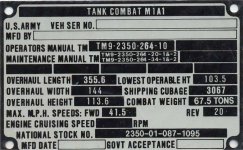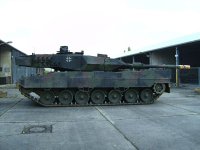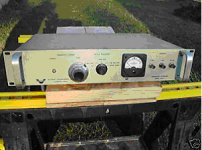For speaker cabinet testing/tuning during the build phase I have found a cheap (curbside treasure) portable music keyboard with built in rythm/drumkit generator useful as a test signal source. You select a repetitive drum beat going on steady repeat that has the various impulse wave shapes in it that are helpful in say adjusting the amount of stuffing and you can make predictable, repeatable subjective judgements by ear as to what is getting better or worse with your speaker system under test.
I'm coming out in favour of my sound check CD; tones, sweeps, band limited noise, sound effects, speech and music, and it (or generally a clone) can live in my shoulder-bag with my multi-meter and screwdriver set.
Oh, I prefer to have a sweep oscillator and a scope, but that set up's not very portable.
And the local importer gave me the test disc free, so I reckon it fulfils the price requirements, too. And I've built a little sweep sine wave generator out of the junk box which is frequently useful for finding resonances and rattles in speakers, cabinets, rooms and ornaments on the mantelpiece. And a couple of heavy duty wirewound power resistors (1000 watts) for soak testing power amps, but they're inconveniently big.
Oh, I prefer to have a sweep oscillator and a scope, but that set up's not very portable.
And the local importer gave me the test disc free, so I reckon it fulfils the price requirements, too. And I've built a little sweep sine wave generator out of the junk box which is frequently useful for finding resonances and rattles in speakers, cabinets, rooms and ornaments on the mantelpiece. And a couple of heavy duty wirewound power resistors (1000 watts) for soak testing power amps, but they're inconveniently big.
i actually built one of those curve tracers in about 5 minutes at work today...... i have a few of those little standby transformers in my "packrat" box, as well as a couple of banana sockets from the back of some scrapped amp boards. i used a series resistor like one of the many designs for the box i've seen. i have the tracer plugged into a variac. at 60v, the output at the test leads is 0.6Vrms open circuit and 50uA short circuit. so i'm not worried that it will damage anything. i "fudged" a leaky transistor and diode on a junk circuit board by bypassing the E-C and the A-K with 39k resistors. a fluke multimeter on diode check doesn't read the faults, but the curve tracer does. it's also twice as fast as the meter method, because you don't have to reverse the leads. it would be nice to make an LED grid version of this so i don't need a scope, but i'm sure i don't have that many (100 or more) LED's and i'm not sure LM3914's are still available
unclejed613 said:any idea where i might find one? it doesn't even need much bandwidth. i'm working on a project that is an AC current source and oscillator that goes up to 100khz for component testing and a cheap scope like that would be perfect to go with it.
Here it is.
http://www.seeedstudio.com/depot/digital-storage-oscilloscope-diy-kit-65288with-panels-p-166.html
i guess i should have been a bit more specific in that it also needs to be a dual channel with an X-Y mode..... that looks like a nice handy device, but it's only single channel without an X-Y mode. i had one of the old heathkit scopes with pronanly a 5Mhz bandwidth, and even those (it was a single channel) had an X-Y mode. i even use X-Y mode for checking the surround processing on multichannel receivers. it's still a handy tool to have.
I built one of the psu testers on Nuuk's site. Its very easy to build and cheap.
http://myweb.tiscali.co.uk/nuukspot/decdun/gainclone_psu.html#gcpsutest
col.
http://myweb.tiscali.co.uk/nuukspot/decdun/gainclone_psu.html#gcpsutest
col.
Magura said:
You should try one of the newer models, some goes all the way up to 20KHz
Magura
22kHz here! (23.5kHz if on axis and VERY loud)
Don't even get me started on that "teen buzz" crap.....it drives me batty. My little nice and nephew claimed that since I was 23 I wouldn't hear it....as it turns out, I out hear them! I can hear tones they cant...its awesome.
there was a company i worked at a long time ago where i came across a military surplus switch with a long (about a foot) arm. that by itself made for a cool bench disconnect switch (panic switch), but the switch body had a hidden "goodie" that i didn't notice until i started wiring it up. it had a disconnect coil in it. it took 12V DC at 10mA to energize the coil, which "tripped" the arm and the switch would shut itself off. so i made the panic switch into a panic breaker of sorts. using a 6 VAC transformer with the secondary in series with the bench AC line i was able to build a circuit that sensed the current going to the bench. if the current went over a pre-set limit, the device would send a disconnect pulse to the panic switch and kill the bench power. the current limit could be adjusted from 1-20A (the bench breaker was 20A anyway). these days i would probably build the sensing circuit using a toroid, because the transformer i used back then probably would fail if repeated 10 to 20A surges were put through it's 5A secondary winding. i usually had the limit set to 5A since it was a production environment, and we only tested one model of amplifier on that test station
Something easier to find would be to use a common GFCI. To add a remote trip input, use a relay to connect a resistor between load hot and line neutral.unclejed613 said:there was a company i worked at a long time ago where i came across a military surplus switch with a long (about a foot) arm. that by itself made for a cool bench disconnect switch (panic switch), but the switch body had a hidden "goodie" that i didn't notice until i started wiring it up. it had a disconnect coil in it. it took 12V DC at 10mA to energize the coil, which "tripped" the arm and the switch would shut itself off. so i made the panic switch into a panic breaker of sorts. using a 6 VAC transformer with the secondary in series with the bench AC line i was able to build a circuit that sensed the current going to the bench. if the current went over a pre-set limit, the device would send a disconnect pulse to the panic switch and kill the bench power. the current limit could be adjusted from 1-20A (the bench breaker was 20A anyway). these days i would probably build the sensing circuit using a toroid, because the transformer i used back then probably would fail if repeated 10 to 20A surges were put through it's 5A secondary winding. i usually had the limit set to 5A since it was a production environment, and we only tested one model of amplifier on that test station
unclejed613 said:but it was such a nice "frankenstein" switch...... besides, it wasn't meant for ground faults, but overcurrent.... and it had an adjustable trip current
Uncle Jed -- I think that it goes on the side of this:
Attachments
jackinnj said:
Uncle Jed -- I think that it goes on the side of this:
67.5 tons. That would have made a nice mobile base for my DIY VAWT project!!!!!

unclejed613 said:but it was such a nice "frankenstein" switch...... besides, it wasn't meant for ground faults, but overcurrent.... and it had an adjustable trip current
Hi unclejed
What is your view about this in the attached picture? I would like to place it as my avatar instead the raven. I think the battle version of your avatar it keeps exactly the same main weapon like....
Regards
Fotios
Attachments
Seen one of these?
My humble bench just got another piece of equipment. It's amazing what I've acquired lately. The most interesting is also the best deal out of the bunch. Paid about 1/10 of top condition value.
A vintage
VECTRON FS-323 FREQUENCY STANDARD for $48.11
Its a once high-end quartz frequency standard with a crystal oven. The unit features front and rear panel BNC type outputs for three frequencies: 5 MHz, 1 MHz and 100 KHz. The front panel meter has a function switch allowing the meter to monitor the following; B+, 5 MHz, 1 MHz, 100 KHz, and crystal oven temperature.
Well, this is the 1st one I've ever seen.
Does anyone have any knowledge about one of these, any hints on 'where' to obtain documentation (op/service etc) . Bet I'll have to seek out a Ham operator or PMEL-Metrology professional.
Charles
My humble bench just got another piece of equipment. It's amazing what I've acquired lately. The most interesting is also the best deal out of the bunch. Paid about 1/10 of top condition value.
A vintage
VECTRON FS-323 FREQUENCY STANDARD for $48.11
Its a once high-end quartz frequency standard with a crystal oven. The unit features front and rear panel BNC type outputs for three frequencies: 5 MHz, 1 MHz and 100 KHz. The front panel meter has a function switch allowing the meter to monitor the following; B+, 5 MHz, 1 MHz, 100 KHz, and crystal oven temperature.
Well, this is the 1st one I've ever seen.
Does anyone have any knowledge about one of these, any hints on 'where' to obtain documentation (op/service etc) . Bet I'll have to seek out a Ham operator or PMEL-Metrology professional.
Charles
Attachments
depends on what you need to know
http://www.linkwitzlab.com/sys_test.htm#Mic
Siegfried Linkwitz website is abundant with knowhow
there you will find a way to make a decent measuring microphone for very little, and a test generator etc etc. If you´re interested in sound , spend a day reading through his generous website- it´s worth it !
If you can´t source the mic capsule mentioned, even the built in omni electret capsules from a discarded casette recorder or boom box may serve surprisingly well, providing good relative measurements.
NB with the right supply, (3-4.5 V across the capsule) many electrets will sound incredibly good, for field recording & such.
For general troubleshooting otherwise, in my electronics workshop I use a 25$ digital multimeter, alongside my other test gear, a small fostex tone generator, and a discarded PC computer speaker box with an amplifier inside for listening - It is quite sensitive so a simple wire probe with a series capacitor ( to block DC) can be used for signal tracing.
http://www.linkwitzlab.com/sys_test.htm#Mic
Siegfried Linkwitz website is abundant with knowhow
there you will find a way to make a decent measuring microphone for very little, and a test generator etc etc. If you´re interested in sound , spend a day reading through his generous website- it´s worth it !
If you can´t source the mic capsule mentioned, even the built in omni electret capsules from a discarded casette recorder or boom box may serve surprisingly well, providing good relative measurements.
NB with the right supply, (3-4.5 V across the capsule) many electrets will sound incredibly good, for field recording & such.
For general troubleshooting otherwise, in my electronics workshop I use a 25$ digital multimeter, alongside my other test gear, a small fostex tone generator, and a discarded PC computer speaker box with an amplifier inside for listening - It is quite sensitive so a simple wire probe with a series capacitor ( to block DC) can be used for signal tracing.
Re: Seen one of these?
Gee I have one of those myself. Got it back in the 1980's from telco surplus. Like new in a roadcase. Mine runs off the -48 volt telco battery supply. I have never used it beyond initial trials to see if it worked, it does, and do not have documentation.
These could be used as a master frequency/time reference in a system or lab. Many frequency counters and such have inputs for an external clock such as this Vectron unit.
You could own a second unit if you want for another $50.
cowboy99 said:My humble bench just got another piece of equipment. It's amazing what I've acquired lately. The most interesting is also the best deal out of the bunch. Paid about 1/10 of top condition value.
A vintage
VECTRON FS-323 FREQUENCY STANDARD for $48.11
Its a once high-end quartz frequency standard with a crystal oven. The unit features front and rear panel BNC type outputs for three frequencies: 5 MHz, 1 MHz and 100 KHz. The front panel meter has a function switch allowing the meter to monitor the following; B+, 5 MHz, 1 MHz, 100 KHz, and crystal oven temperature.
Well, this is the 1st one I've ever seen.
Does anyone have any knowledge about one of these, any hints on 'where' to obtain documentation (op/service etc) . Bet I'll have to seek out a Ham operator or PMEL-Metrology professional.
Charles
Gee I have one of those myself. Got it back in the 1980's from telco surplus. Like new in a roadcase. Mine runs off the -48 volt telco battery supply. I have never used it beyond initial trials to see if it worked, it does, and do not have documentation.
These could be used as a master frequency/time reference in a system or lab. Many frequency counters and such have inputs for an external clock such as this Vectron unit.
You could own a second unit if you want for another $50.
jackinnj said:
Uncle Jed -- I think that it goes on the side of this:
nice, where do i get one...... i've been looking for a good off-road vehicle...... wouldn't mind having it on the highway during rush-hour traffic either.........
just be aware you'll run into the same problem i had shrinking that pic for an avatar, it will get compressed horizontally. if you look at the M1A1 in my avatar, you'll notice it looks taller (or narrower) than it should. i was able to crop most of the picture out to get as little squish as possible, but it still squeezed the tank about 10-15%.... ok enough OT stuff.....
that's a secondary transfer standard. calibrating it requires a secondary standard with a WWVB-locked oscillator or an OMEGA or LORAN-C (these days maybe even locked to a GPS receiver) locked oscillator, all of which are receivers with phase locked crystal ovens. zero-beating it against WWV on a shortwave receiver will get you in the ballpark, but the "ballpark" i'm talking about is 1 part in 10E7 or thereabouts. i don't know what the published specs for your freq standard is, but if i remember correctly, it should be about 1 part in 10E10. the phase locked receivers are generally around 1 part in 10E11 or 12. i think the standard needs to be running in a room with a stable temperature of about 70F (25C) for 24 to 48 hours before beginning the calibration. all of that info should be in the manual or in a calibration manual, and it should get a calibration if any work has been done on it, except for maybe minor repairs like replacing a power switch or indicator bulb.
- Status
- This old topic is closed. If you want to reopen this topic, contact a moderator using the "Report Post" button.
- Home
- Design & Build
- Equipment & Tools
- List your favorite(cheap) test tools for audio systems


